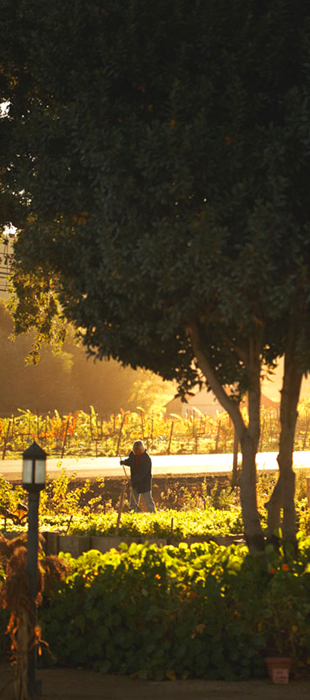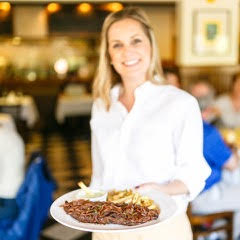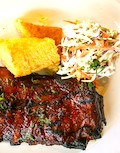Our Gardens
Cindy’s Gardens Create an Organic Connection for Chefs and Diners Alike
Long before chefs’ gardens became a popular addition to upscale restaurants in cities across the country, Cindy Pawlcyn, the Napa Valley culinary pioneer blazed the trail at her legendary Mustards Grill, when she installed an organic garden where she could draw seasonal inspiration for her dishes, as well as treat her diners to the pure flavors of produce picked fresh just hours before arriving on the plate.
Cindy’s love of seasonal, fresh ingredients began during her Minnesota childhood. Her father, an avid gardener, taught her the ins and outs of growing vegetables and instilled a love of gardens and the vibrant flavors of home-grown food. “Everywhere I’ve lived I’ve had a garden, whether it was a window box of herbs when I lived in Chicago or the large garden at my house, I feel it’s important for freshness and flavor and it brings people closer to their food,” Cindy says.
Today, the gardens at Mustards Grill have blossomed into two fully planted acres that provide 20 percent of the restaurant’s produce year-round and inspiration for the restaurant’s culinary team. Our team of seasoned gardeners employs beneficial plants, flowers and insects to help with pest control, uses composting and natural fertilizers like egg shells (which provide slug control) and maintains the planting and irrigation of the garden’s raised boxes, trees and fields. The planting schedule is designed in concert with the chefs and harvests fruits, vegetables, flowers and herbs as they’re needed by the restaurant. The cozy, country feel of the Mustards garden is inspired by one of our gardener's experience at former French Laundry owner Sally Schmitt’s biodynamic Apple Farm in Mendocino, California. In fact, the garden’s homey trellises are made from the pruned branches of Mulberry trees from the Apple Farm.
In summer the Mustards garden is riot of color with marigolds and zinnias and zucchini blossoms bordering the lush, green beds of beets, purple potatoes, fingerling potatoes, French melons, watermelons, tomatillos, chives, oregano and mint. In winter, the gardens include long-podded fava beans, cheddar cauliflower, various garlic and cabbage varieties, onions, Swiss chard, kale, radishes, carrots, broccoli, peas, mâche and arugula.
Another aspect of the gardens that make a visit to Mustards unique is the joy it brings to diners, fusing the nexus of food, wine and natural beauty that exists in the Napa Valley, and culminating in a complete feast of the senses.
“A lot of guests really enjoy walking through the gardens, before or after their meals and seeing what a pepper or a tomato looks like growing on the vine,” says Cindy. “I’ve had people confuse the two simply because they’re not exposed to what they look like. It’s nice that people get to walk through the gardens and see how tomatoes, cucumbers and squash grow.”


